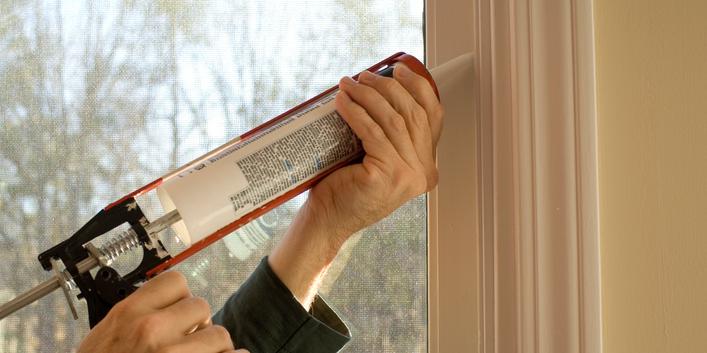
 Sometime during your crusade to seal those energy robbing cracks and holes in your home, you're bound to start asking yourself, "Isn't air flow important for a healthy home? Can I take this whole thing to the extreme?"
Sometime during your crusade to seal those energy robbing cracks and holes in your home, you're bound to start asking yourself, "Isn't air flow important for a healthy home? Can I take this whole thing to the extreme?"Yes! Air quality includes having an appropriate source of fresh air. And Yes, that needs to be considered when you make your house tighter! The building science mantra is "seal tight, and ventilate right."
While it's true that air flow prevents interior pollutants like dust and mold from reaching unhealthy levels, a leaky home provides no assurance that indoor air pollutants are properly eradicated, nor that the replacement air is coming from a source you would voluntarily breathe! If leaky doors & windows appear to be your main source of leakage, during periods of calm weather with no wind, for example, air can sit stagnant in a leaky home for days. On the other hand, during a windy day in the winter, a leaky home effectively needs to be re-heated from scratch every few hours, which is a waste of both energy and money. If stack effect (see the article on Air Sealing) is your source of replacement air, you are likely breathing air from your basement, attic, crawlspaces, or attached garage, if you have one. So the best way to ensure that a home is both healthy, safe, and energy efficient is to air seal the home as well as possible, and to pair air sealing efforts with increased mechanical ventilation to make sure that air cycles in and out of the house at a healthy and consistent rate.
That said, if you happen to live in an old, leaky home, and aren't ready to install a whole house ventilation system or heat-exchange ventilation system (which captures the heat from outgoing air and transfers it to incoming air to minimize heat loss during the heating season, and vice versa during the cooling system), the truth is that your home probably has a long way to go before its tightness is in any way a health hazard.
Ventilation standards like ASHRAE 62.2 are largely designed for newer, very energy efficient buildings that have very little air leakage. Chances are, even after significant air sealing efforts, an older, leakier home will have enough natural ventilation (which we recommend supplementing with basic mechanical ventilation systems like bathroom fans and range hoods for those stagnant, windless days) to keep the air in your home healthy. The EPA recommends a rate of .35 ACH (natural air changes per hour — that is, just over 1/3 of the air in your home being replaced every hour; or 3 hours for a full air change) for healthy indoor air quality. The average home has a much higher rate of natural air infiltration than this.
However, don't take chances, especially if you have any atmospheric combustion appliances, like a gas stove, gas dryer, or oil or gas heating unit! If you're going all out retrofitting your home yourself, make sure you have a qualified Home Performance Professional test your home after the improvements to check for adequate draft for your combustion appliances, so that there is no chance that carbon monoxide will be inadvertantly sucked into the home. The best thing you can do as a homeowner to ensure that your home is as energy efficient and as healthy as possible is to talk to your Home Performance Professional about where you should focus your home improvement efforts. If you could save as much as 30% on your energy bills, it just might pay to install an energy efficient mechanical ventilation system to ensure that your family is breathing healthy air!
What is Home Performance?
When you buy a car, you expect good gas mileage with low upkeep, safe handling, and comfort inside. In other words, respectable performance. Why would you have any other expectations for a house? The ability of your home to deliver comfort, health, and affordability is what a Home Performance Assessment is all about. Is the home functioning at its optimum? Or are there deficiencies and inefficiencies? An assessment can often determine which cost effective items can improve the performance of your home most!
Check out the Home Performance Assessment page and its Learn page for the issues and how your home can be improved!
Are you new to Home Ownership?
Make sure you look at the suggestions on my Renovations page; more useful information on my Real Estate Pages; and an excellent read on the Building Science Corporation's website: The Building Science Guide to Home Ownership! See my LINKS page for more.
Of course, feel free to call (718.941.3725) or email me with questions and concerns!
Are you a builder or developer looking to meet new local energy codes or Energy Star?
As an independent third party, I can provide initial and test-out Blower Door and CAZ testing along with Infrared imagery to help make your project a success.
Contact me for more information.
